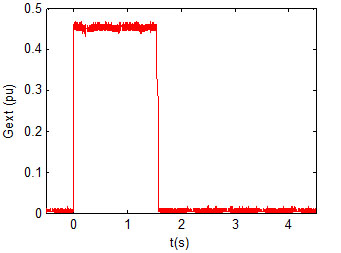
The external load admittance

The actual external current
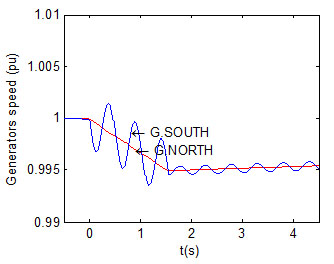
The generators speed
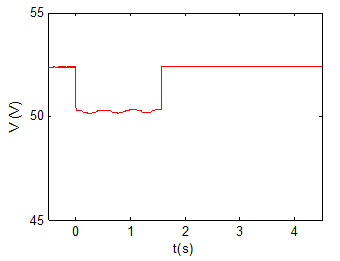
The actual external load voltage

The bus voltage
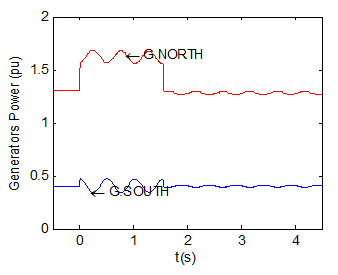
The generated power



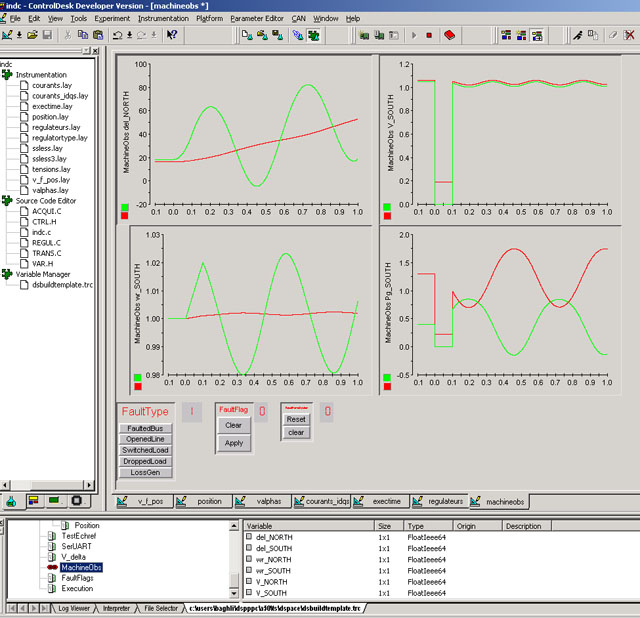
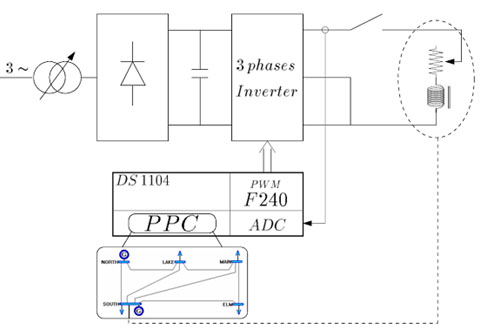
 The external load admittance |
 The actual external current |
 The generators speed |
 The actual external load voltage |
 The bus voltage |
 The generated power |
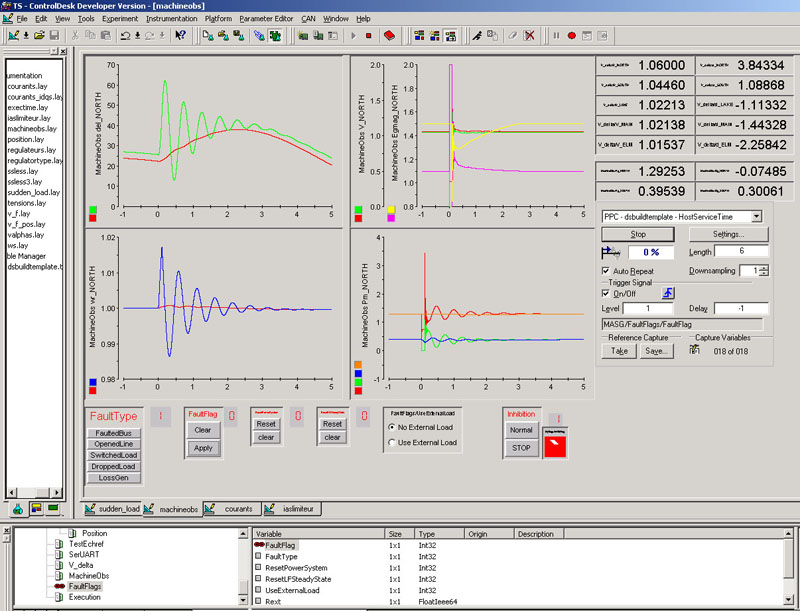
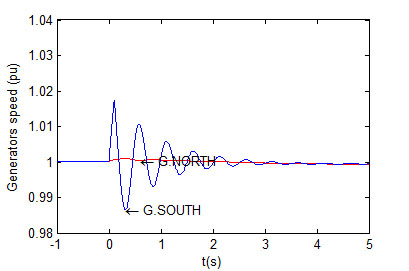 The generators speed |
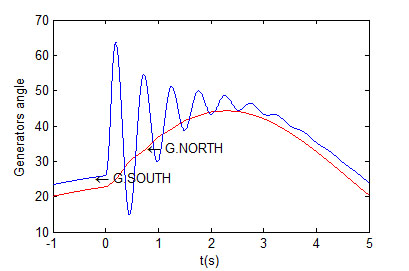 The generators Eg phase |
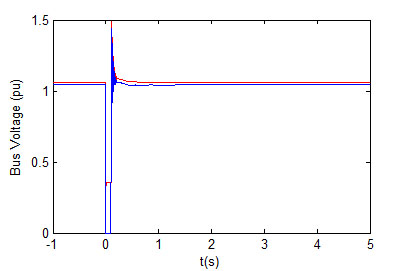 The bus voltage |
 The generated power |
| [1] | L-F. Pak, V. Dinavahi, G. Chang, M.Steurer, P.F. Ribeiro, “Real-Time Digital Time-Varying Harmonic Modeling and Simulation Techniques,” IEEE Transactions on Power Delivery, Volume 22, Issue 2, April 2007 pp. 1218 - 1227, available online http://dx.doi.org/10.1109/TPWRD.2007.893618 |
| [2] | S. Suryanarayanan, W. Ren, M. Steurer, P.F. Ribeiro and G. T. Heydt, “A real-time controller concept demonstration for distributed generation interconnection,” IEEE Power Engineering Society General Meeting, Montreal 18-22 June 2006, pp3, available online http://dx.doi.org/10.1109/PES.2006.1708926 |
| [3] | R. J. Marttila, E. P. Dick, D. Fischer and C. S. Mulkins, “Closed-loop testing with the real-time digital power system simulator,” Electric Power Systems Research, Volume 36, Issue 3, March 1996, Pages 181-190, available online http://dx.doi.org/10.1016/0378-7796(95)01030-0 |
| [4] | S. Karimi, P. Poure and S. Saadate , “FPGA-based fully digital fast power switch fault detection and compensation for three-phase shunt active filters,” Electric Power Systems Research, Volume 78, Issue 11, November 2008, Pages 1933-1940, available online http://dx.doi.org/10.1016/j.epsr.2008.03.023 |
| [5] | B. Lu, X. Wu, H. Figueroa, A. Monti, “A Low-Cost Real-Time Hardware-in-the-Loop Testing Approach of Power Electronics Controls,” IEEE Transactions on Industrial Electronics, April 2007, Volume : 54, Issue 5, pp. 919-931, available online http://dx.doi.org/10.1109/TIE.2007.892253 |
| [6] | George G. Karady and Jun Gu, “Employing reprogrammable analog VLSI in real-time analysis of transient stability,” Electric Power Systems Research, Volume 77, Issue 8, June 2007, Pages 980-988, available online http://dx.doi.org/10.1016/j.epsr.2006.08.024 |
| [7] | L. Baghli, “Réalisation d'un Environnement Graphique avec Base de Données pour l'Analyse et la Simulation de Réseaux Electriques,” FDP, pp. 123, June 1994, available online http://www.baghli.com/dl/pfe_baghli.pdf |
| [8] | Stevenson, W.D.Jr., “Elements of Power System Analysis,” Mc Graw Hill, 4th edition, 1982 |
| [9] | Stagg, G.W. and El-Abiad, A.h., “Computer Methods in Power System Analysis,” Mc Graw Hill, 1968 |
| [10] | C. Schacherer, J. Langston, M. Steurer, M. Noe, “Power Hardware-in-the-Loop Testing of a YBCO Coated Conductor Fault Current Limiting Module,” ASC2008, 1LPG05, pp 5, Chicago, August 17 - 22, 2008 |
| [11] | J.H. Kim, M. Park, M.H. Ali, A.R. Kim, S.R. Lee, J.Y. Yoon, J. Cho, K.D. Sim, S.H. Kim and I.K. Yu, “A SFCL modeling and application with real HTS material connecting to real time simulator,” Physica C: Superconductivity, Volume 468, Issues 15-20, 15 September 2008, Pages 2067-2071, available online http://dx.doi.org/10.1016/j.physc.2008.05.128 |
| [12] | K. Marouani, L. Baghli, D. Hadiouche, A. Kheloui, and A. Rezzoug, “Discontinuous SVPWM techniques for double star induction motor drive control,” in Proc. IEEE IECON, Paris, France, pp. 902-907, Nov. 6-10, 2006, available online http://dx.doi.org/10.1109/IECON.2006.347288 |
| [13] | K. Marouani, L. Baghli, D. Hadiouche, A. Kheloui, and A. Rezzoug, “A New PWM Strategy Based on a 24-Sector Vector Space Decomposition for a Six-Phase VSI-Fed Dual Stator Induction Motor,” IEEE Transactions on Industrial Electronics, Volume 55, Issue 5, May 2008 pp. 1910 - 1920, available online http://dx.doi.org/10.1109/TIE.2008.918486 |
| [14] | “TMS320F/C240 DSP controllers reference guide, peripheral and specific devices,” Texas Instruments, Dallas, TX, Literature Number SPRU161C, 1999, available online http://focus.ti.com/lit/ug/spru161d/spru161d.pdf |
| [15] | Arrillaga, J. and Arnold, C.P., “Computer Analysis of Power Systems,” John Wiley & Sons, 1994 |
| [16] | B. Stott, and O. Alsac, “Fast Decoupled Load Flow,” IEEE Transactions on Power Apparatus and Systems PAS-93, May 1974, pp. 859-869, available online http://dx.doi.org/10.1109/TPAS.1974.293985 |
Mise à jour : 27/02/2010